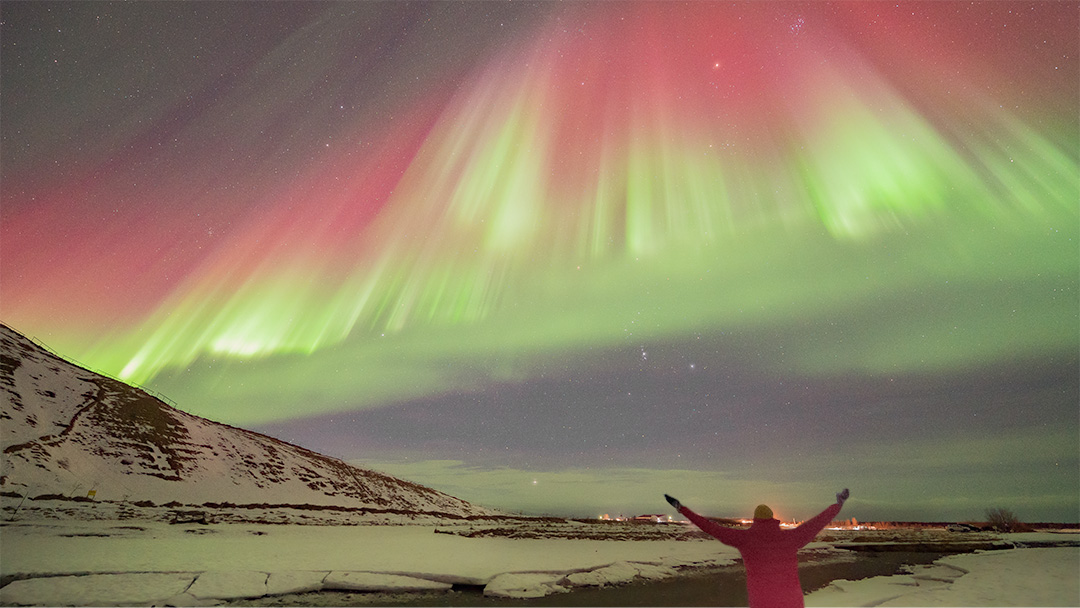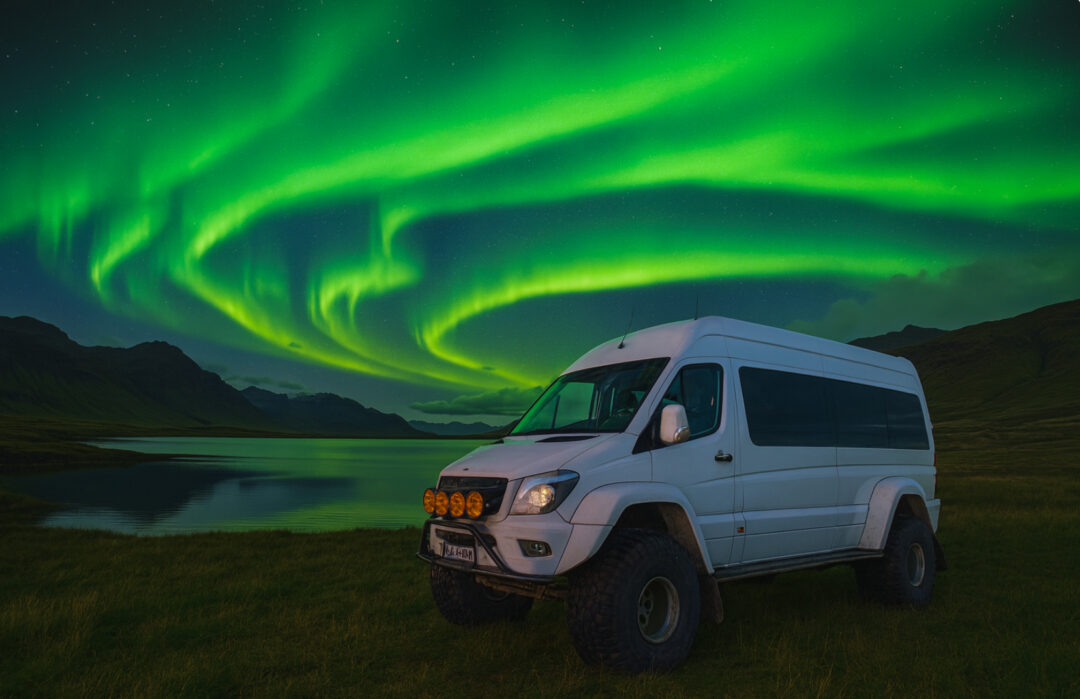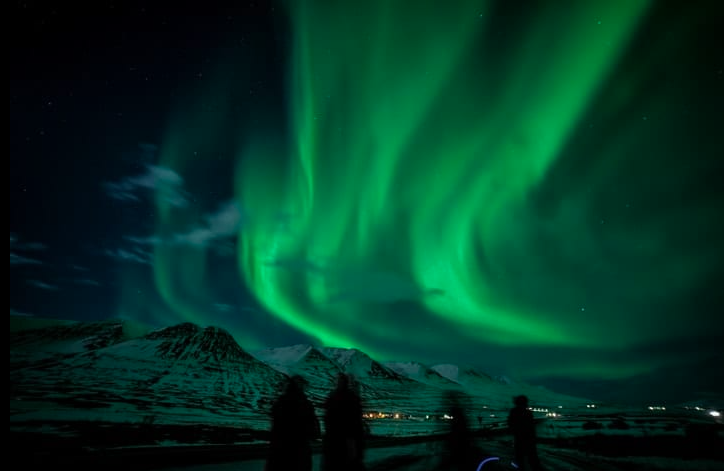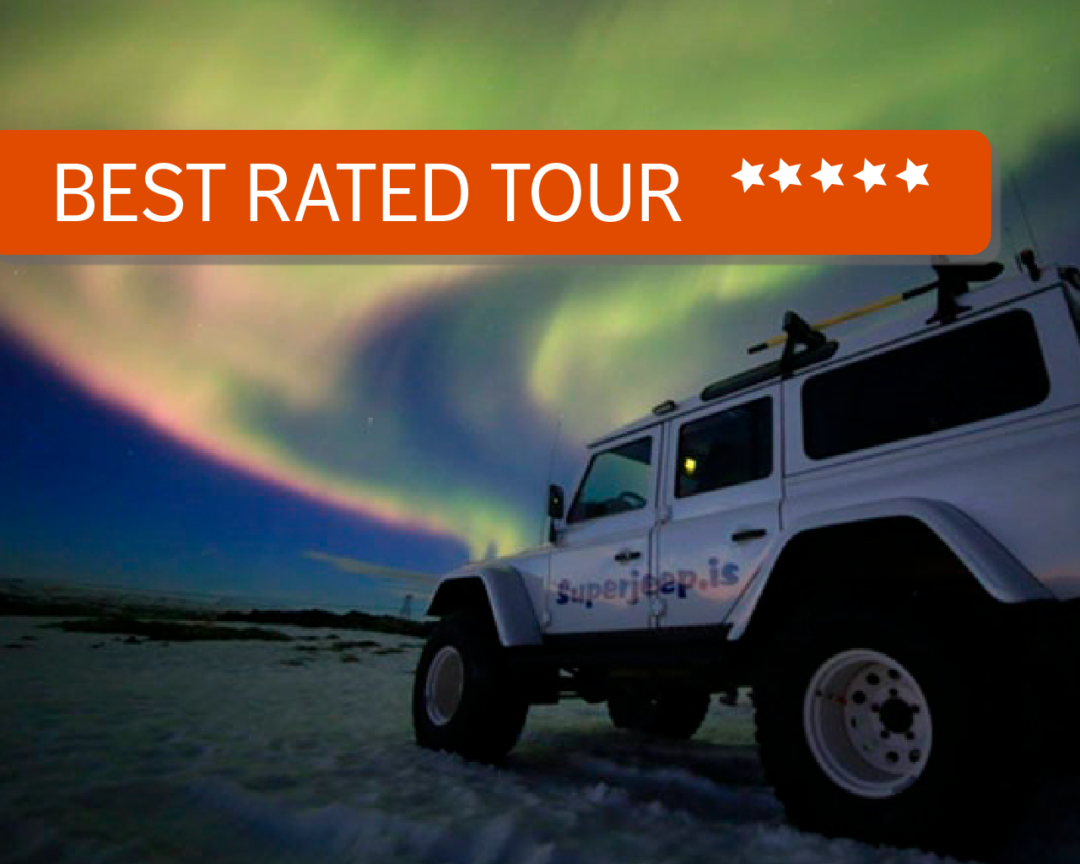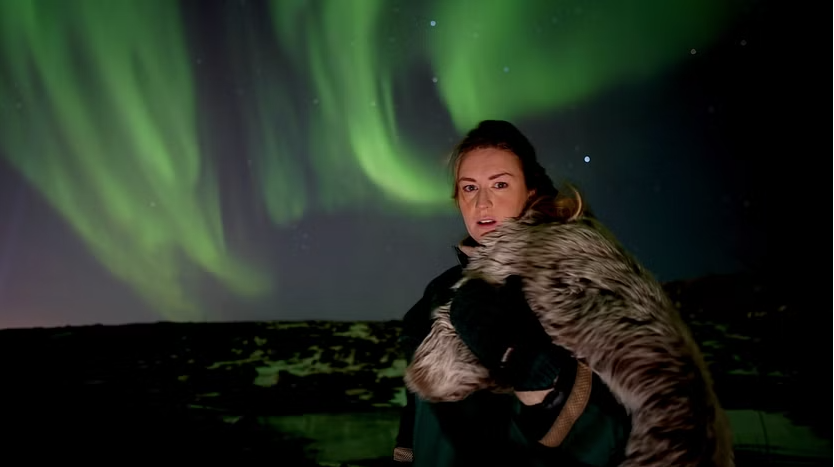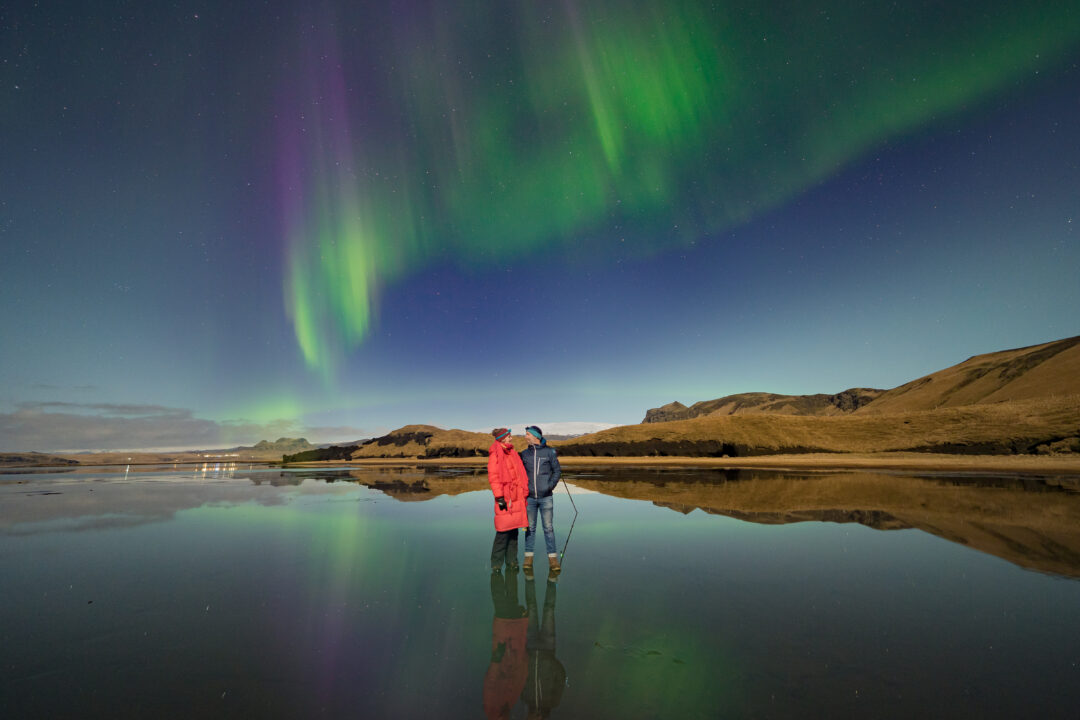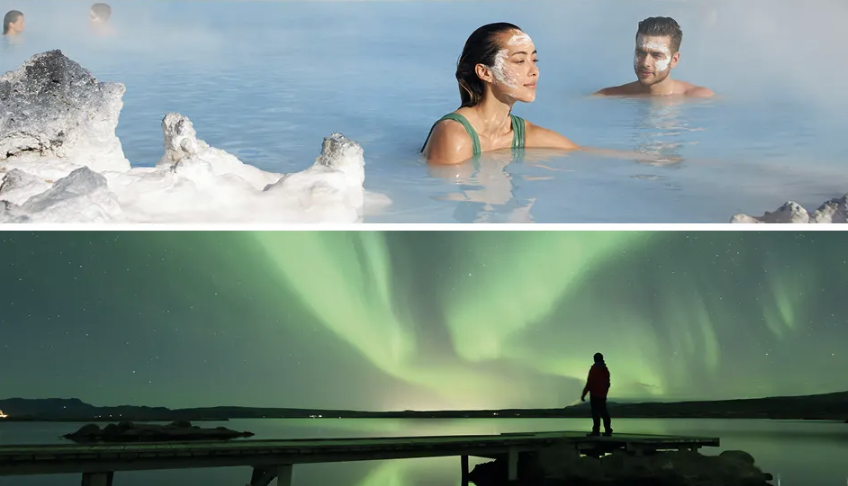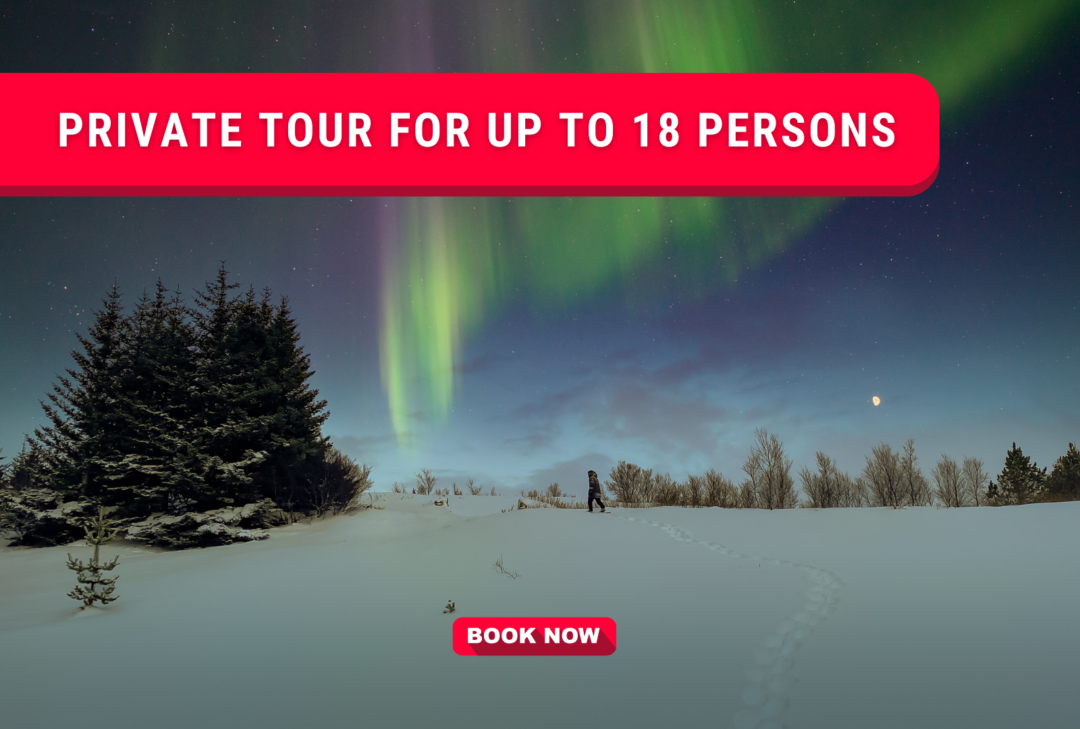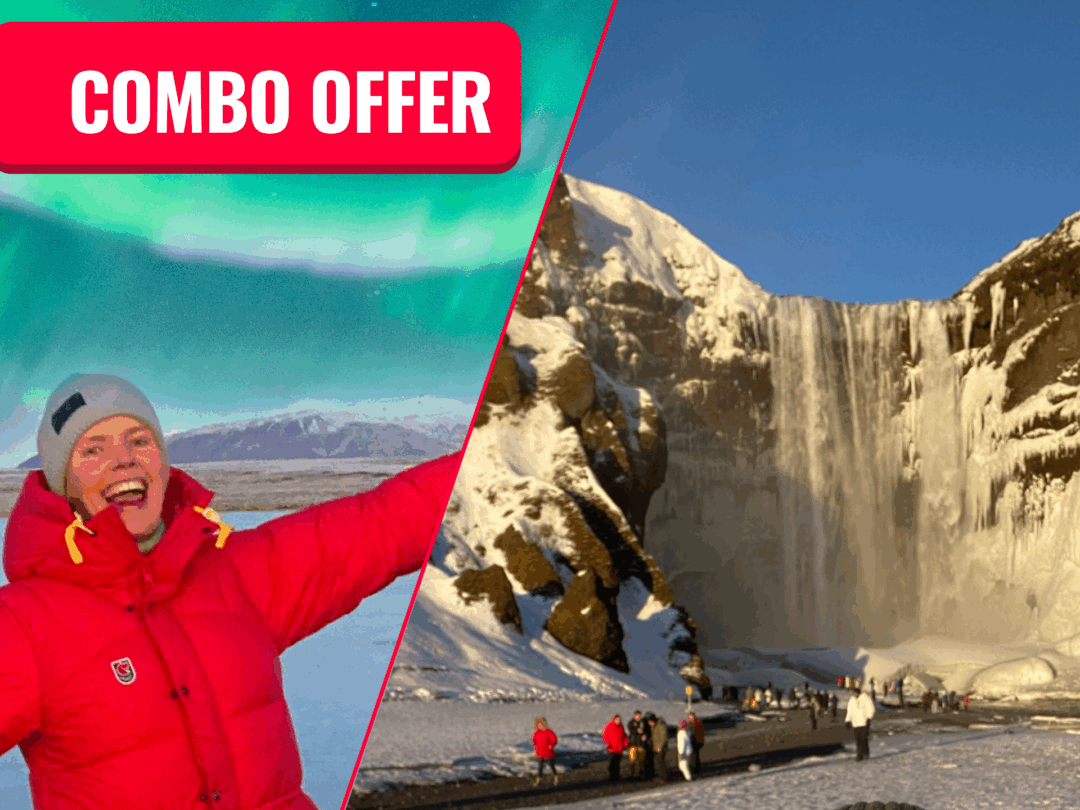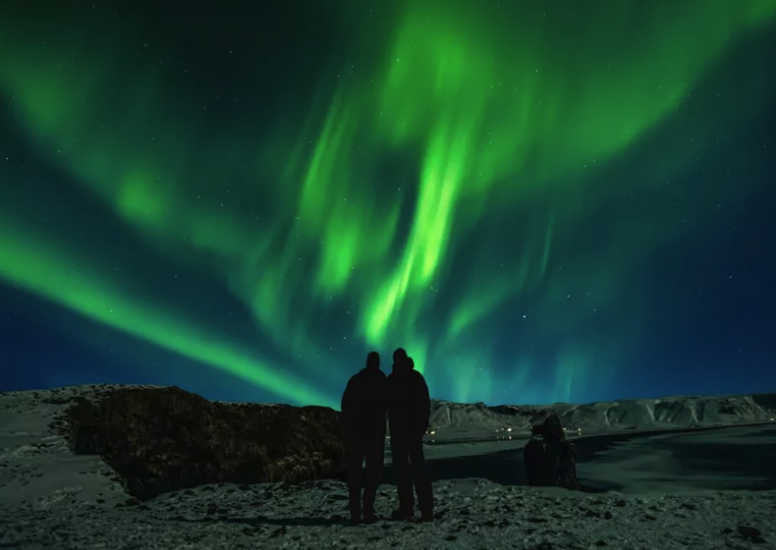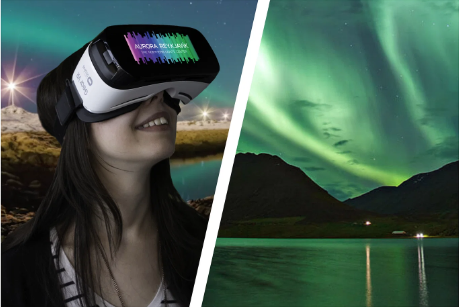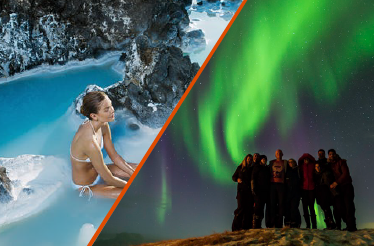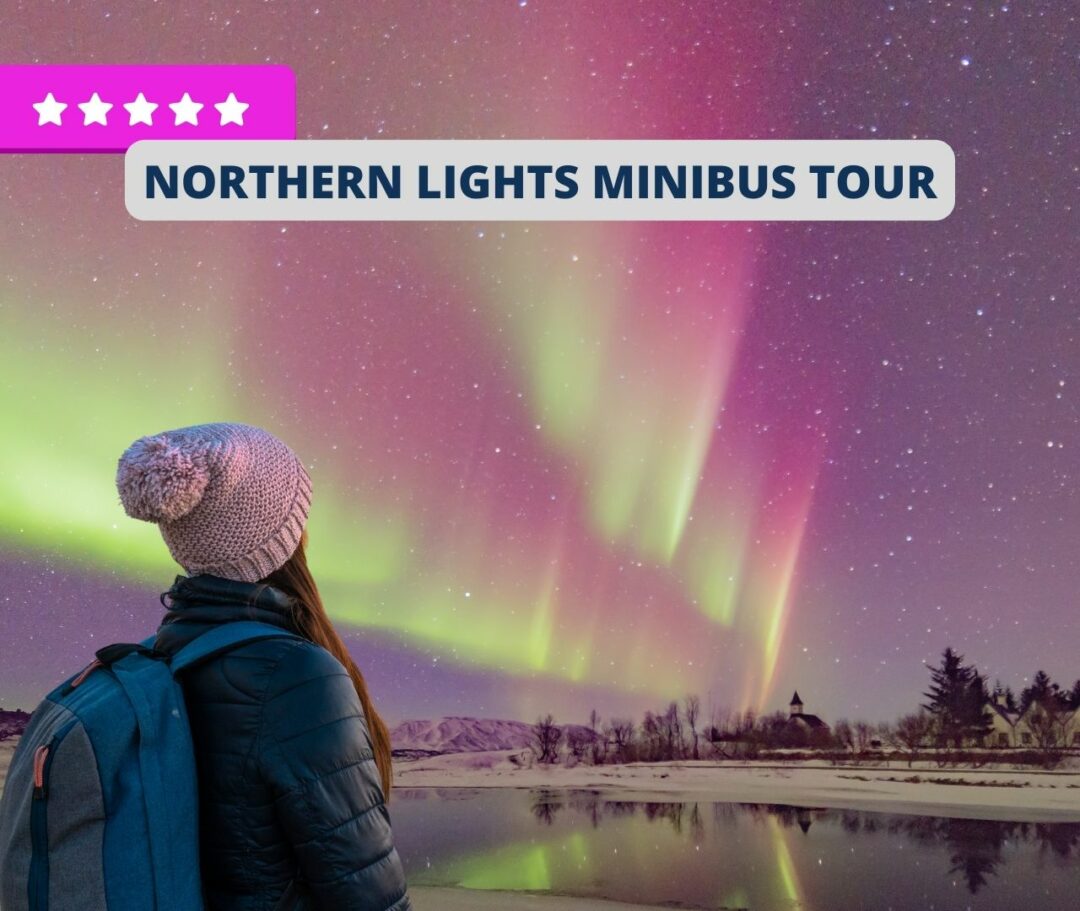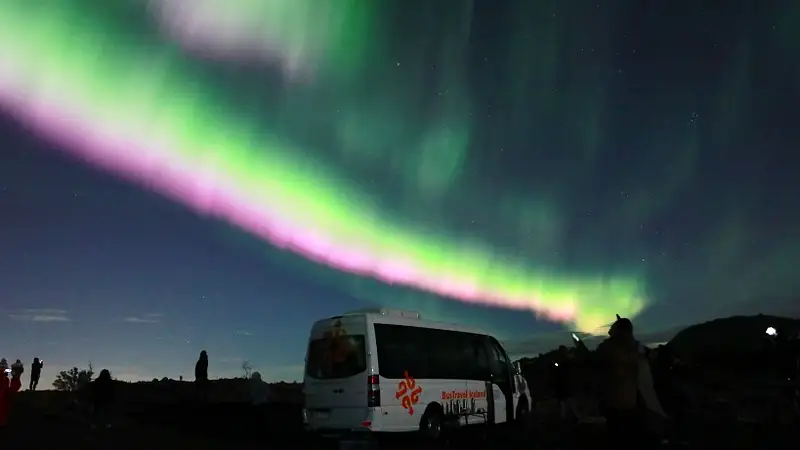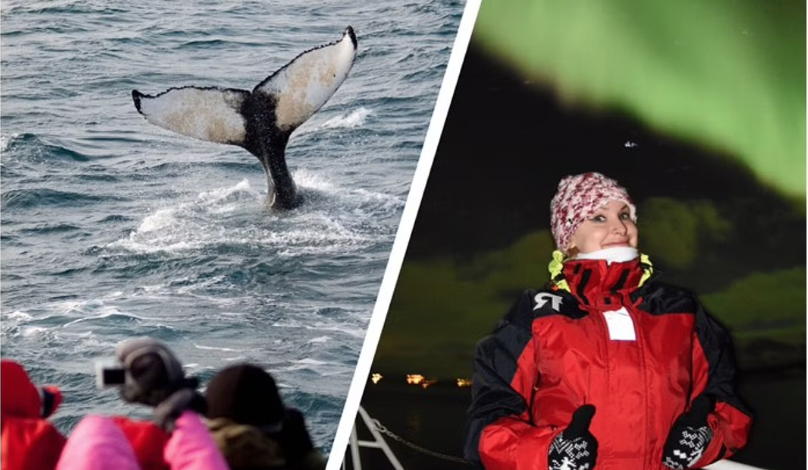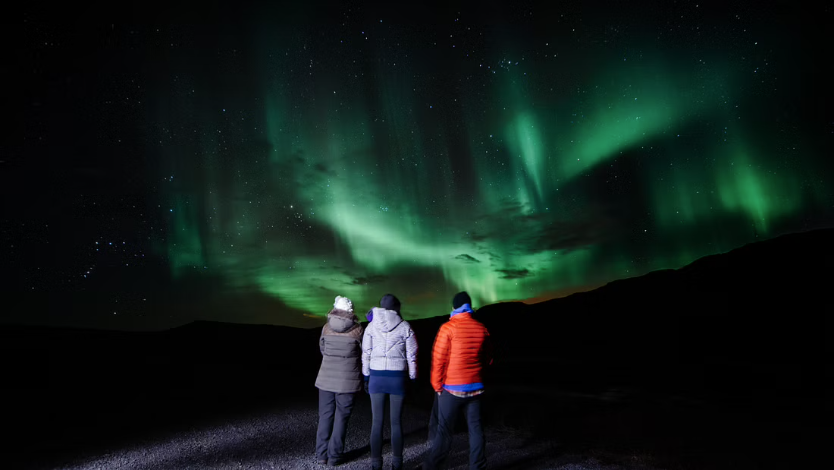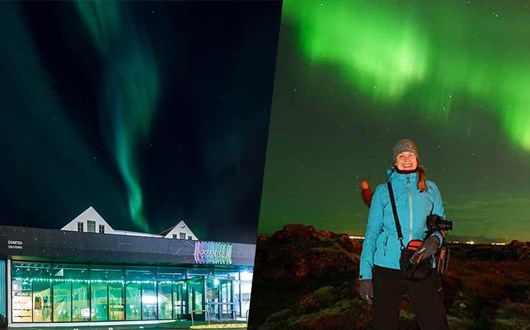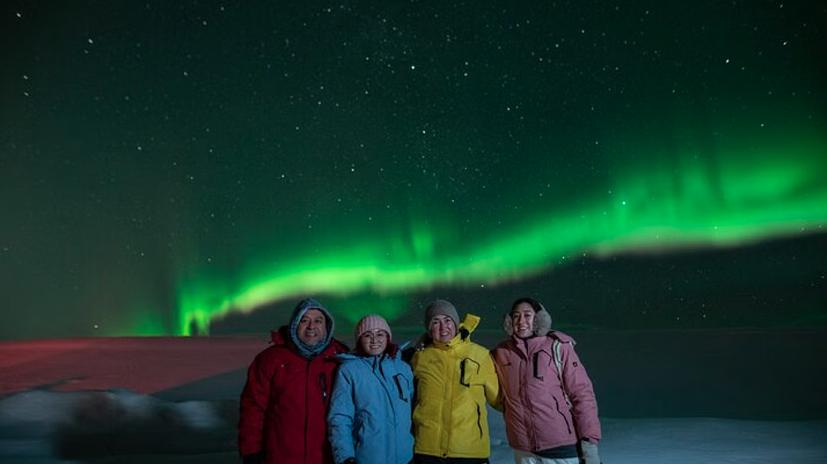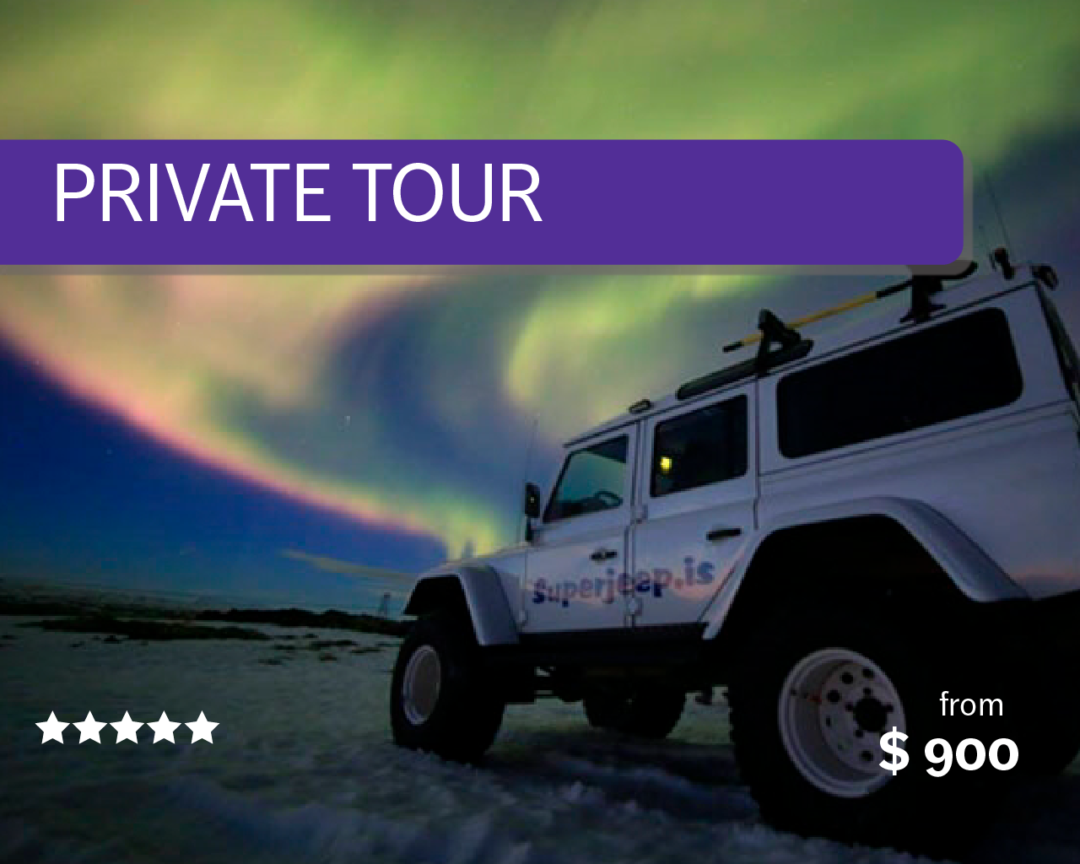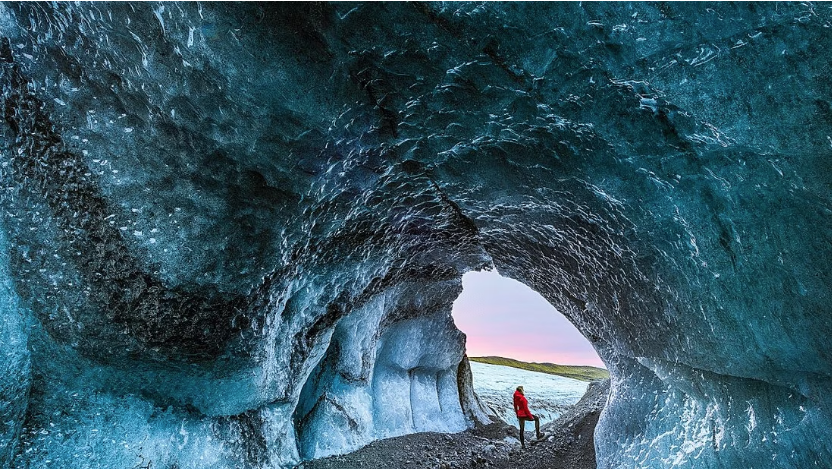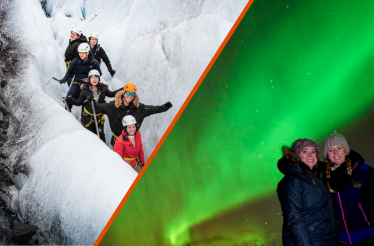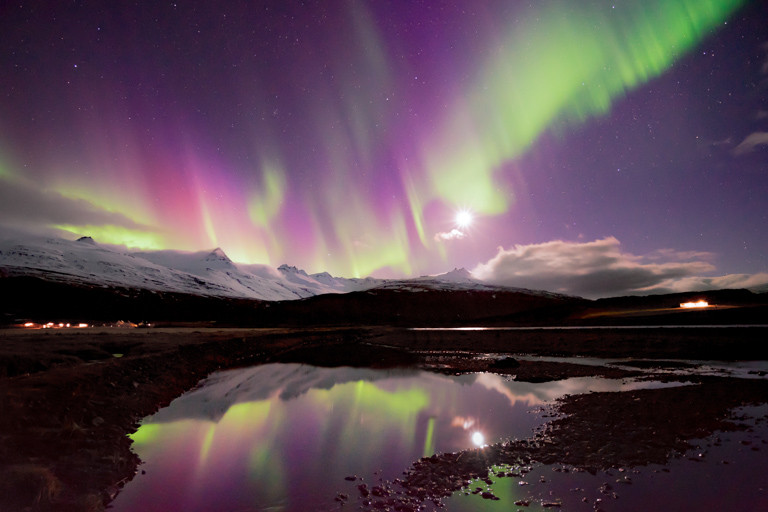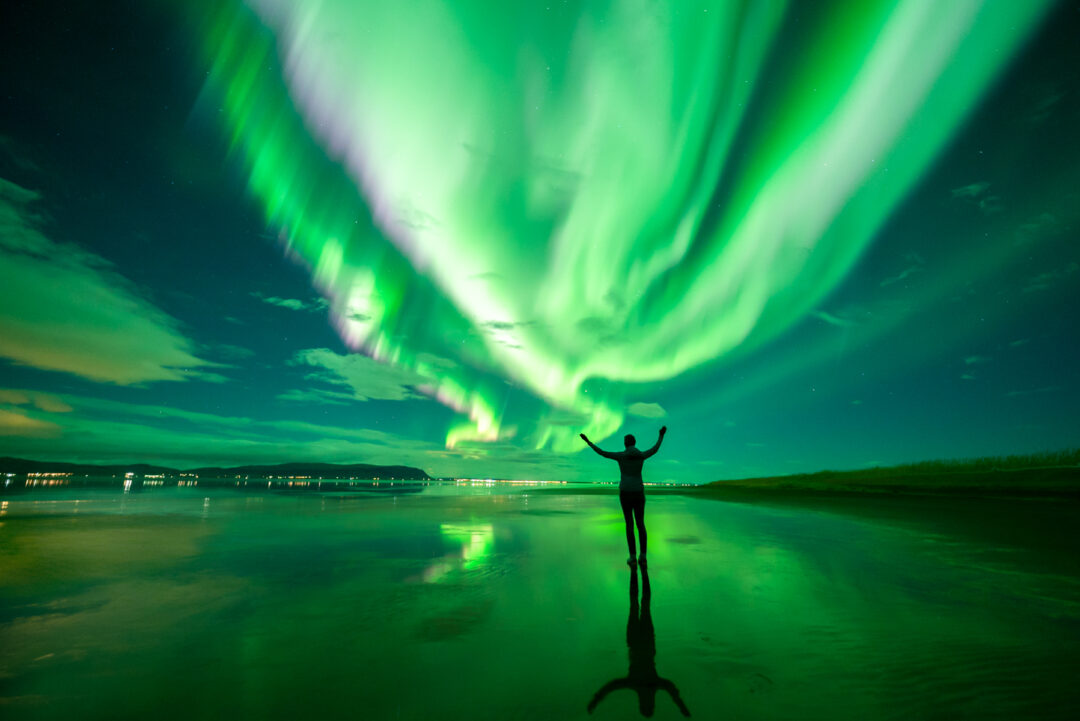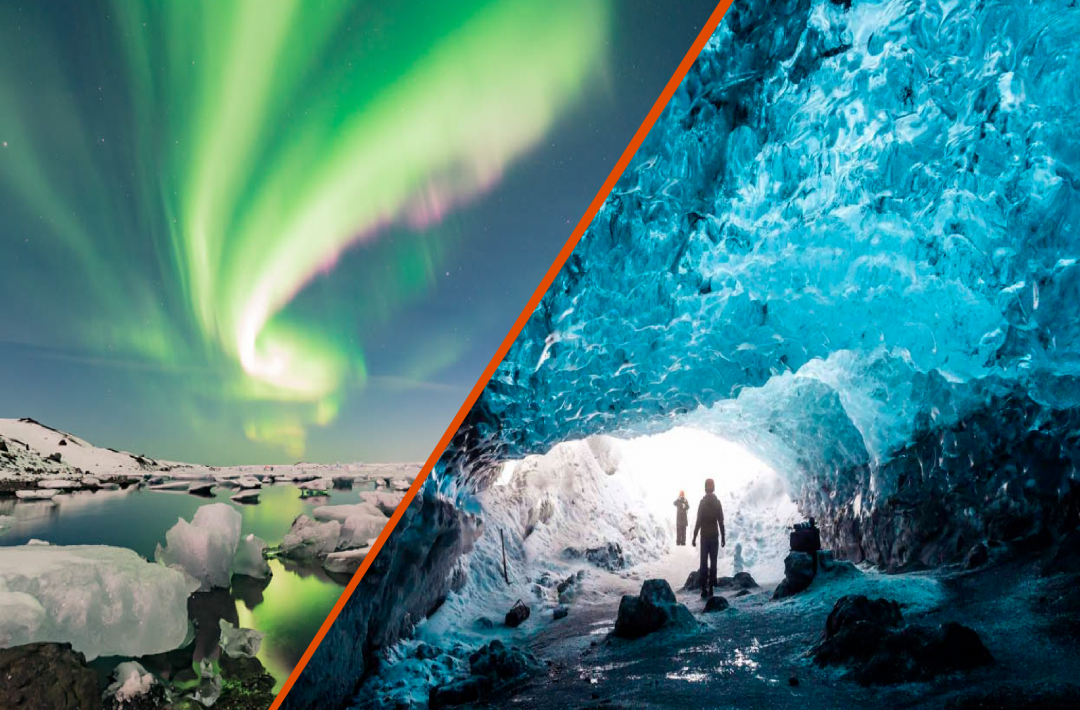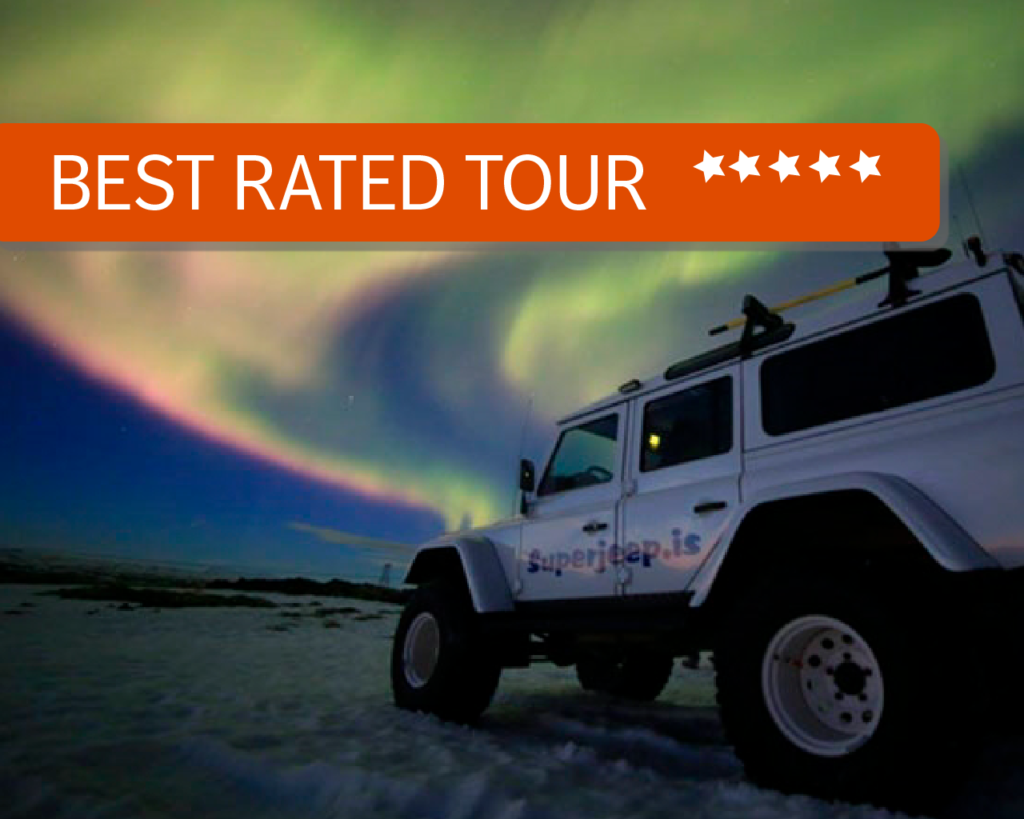How to Read an Aurora Forecast: Your Complete Guide to Digesting the Data
JOIN US ON A NORTHERN LIGHTS EXCURSION
For travellers and aurora enthusiasts alike, witnessing this phenomenon is often the highlight of a lifetime.
However, catching the aurora isn’t just a matter of luck; it’s a combination of being in the right place at the right time and understanding the science behind the aurora forecast.
This guide goes beyond the basics, explaining every key element of an aurora forecast so you can maximise your chances of experiencing this incredible natural phenomenon for yourself.
NORTHERN LIGHTS SUPERJEEP EXCURSION
Understanding the Aurora Forecast: The Essentials
The aurora forecast provides a prediction of how likely the Northern Lights are to occur based on solar and geomagnetic activity. Most aurora forecasts combine several factors:
- Solar Activity: This refers to disturbances on the Sun, such as solar flares and coronal mass ejections, that release colossal amounts of energy into space which, if aiming an Earth-facing position, can trigger intense auroras.
- Geomagnetic Conditions: These are measured by indices like the Kp Index, which quantifies the level of geomagnetic disturbances caused by solar wind interacting with Earth’s magnetic field.
- Cloud Cover: Even with strong auroral activity, clouds can obscure the view of the lights. Clear skies are essential for successful aurora viewing.
Aurora forecasts are typically updated frequently, and understanding the nuances of these updates can help you time your aurora chase more effectively.
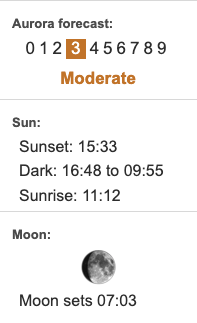
Northern lights activity forecast showing KP Index level, here 3/9 – moderate
What Is the Kp Index and Why Does It Matter?
The Kp Index is the backbone of most aurora forecasts.
This global geomagnetic activity index measures disturbances in Earth’s magnetic field on a scale from 0 to 9.
A higher Kp value indicates stronger geomagnetic storms and a greater likelihood of auroras. Here is a rough breakdown of what to expect with each (Note: anything above Kp 2 is likely to be visible in Iceland…just saying):
- Kp 0-2: Low activity, with faint auroras visible only in regions close to the poles.
- Kp 3-4: Moderate activity, clearly visible in places like Iceland, northern Norway, and Alaska.
- Kp 5-6: Strong activity, offering vibrant displays with potential for auroras further south.
- Kp 7-9: Intense geomagnetic storms, capable of producing auroras visible far beyond their usual range.
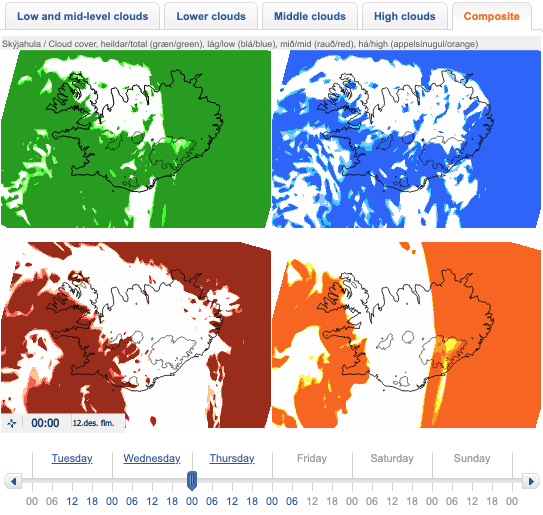
Cloud cover forecast for Iceland,
divided per cloud type
Cloud Cover: The Gateway to the Sky
Even if the Kp Index predicts strong auroras, heavy cloud cover can ruin your chances of seeing them.
Most aurora forecast tools include detailed cloud maps to help you find clear skies.
How to Read Read the Cloud Forecast Maps
Cloud maps are typically colour-coded to indicate levels of cloud cover:
- White or light gray areas: Clear skies, ideal for viewing.
- Darker shades: Cloudy regions, less favourable for aurora visibility.
Look specifically at low and middle clouds, as these layers have the most potential to block your view of the aurora.
High clouds, while not ideal, are often thin enough to allow the aurora to shine through faintly.
Understanding Key Space Weather Terms
Beyond the basic Kp Index and cloud cover, serious aurora chasers should familiarise themselves with additional space weather metrics.
These advanced measurements provide deeper insight into the conditions that create auroras.
Bz: The Magnetic Field’s Direction
The Bz value measures the orientation of the interplanetary magnetic field (IMF), which is carried by the solar wind. Specifically, it tells us whether the magnetic field is pointing north (positive Bz) or south (negative Bz).
- Southward (Negative) Bz: A negative Bz allows solar wind particles to more easily penetrate Earth’s magnetic shield, creating the conditions needed for strong auroral displays.
- Northward (Positive) Bz: A positive Bz generally means the solar wind is deflected, reducing the likelihood of auroras.
Why It Matters:
Think of the Earth’s magnetic field as a gate. When the Bz is negative, the “gate” is open, allowing charged particles to enter Earth’s atmosphere and interact with gases like oxygen and nitrogen, creating the aurora’s signature colours.
Solar Wind Speed: The Driving Force
Solar wind is a stream of charged particles emitted by the Sun. Its speed, measured in kilometres per second (km/s), is a critical factor in determining auroral activity.
- Typical Solar Wind Speeds: Around 300-500 km/s.
- High Speeds (500+ km/s): These speeds often result in more energetic auroras, as faster solar wind carries more energy into Earth’s magnetosphere.
Pro Tip: Monitor our aurora forecast tools monitor real-time solar wind speeds. A sudden increase often signals enhanced auroral activity within hours – time to grab your jacket and flask and get outside!
Density: The Packed Energy
The density of solar wind particles, measured in particles per cubic centimetre (p/cm³), is another key factor. Higher densities mean more particles are available to interact with Earth’s atmosphere, often leading to brighter and more dynamic auroras.
- Low Density (1-5 p/cm³): Auroras may be faint or sporadic.
- High Density (10+ p/cm³): Expect vivid, widespread auroral displays.
Why It Matters:
Dense solar wind particles increase the intensity of the collisions between solar particles and atmospheric gases, creating the vibrant greens, purples, and reds often associated with strong auroras.
Interplanetary Magnetic Field (Bt): The Strength of the Field
The Bt value measures the total strength of the interplanetary magnetic field (IMF). Higher Bt values indicate stronger magnetic interactions between the solar wind and Earth’s magnetosphere.
- Low Bt (below 5 nT): Weaker auroral activity.
- High Bt (above 10 nT): Strong magnetic coupling, increasing the likelihood of auroras.
Why It Matters:
A strong Bt enhances the efficiency of energy transfer from the solar wind to Earth’s magnetic field, amplifying auroral activity.
In simplicity, the higher the Bt figure, the greater the chance of witnessing those Instagram-worthy snaps – also…we live here, and it never gets old!
Real-Time Monitoring: The Role of Observatories
Aurora hunters can supplement forecast data with real-time measurements from magnetic observatories, like Iceland’s Leirvogur Magnetic Observatory. These facilities provide live graphs of geomagnetic activity, helping you track auroral potential hour by hour.
- Spikes in the Graphs: Indicate heightened geomagnetic disturbances, often a precursor to auroral displays.
- Calm or Flat Lines: Suggest minimal activity, meaning weaker auroras or none at all.
NORTHERN LIGHTS SMALL GROUP EXCURSION
Planning Ahead with Long-Term Forecasts
For travellers planning an aurora trip weeks in advance, the NOAA Space Weather Prediction Center provides a 27-day forecast based on recurring solar features.
While not as accurate as short-term forecasts, these tools offer valuable insights into periods of high solar activity.
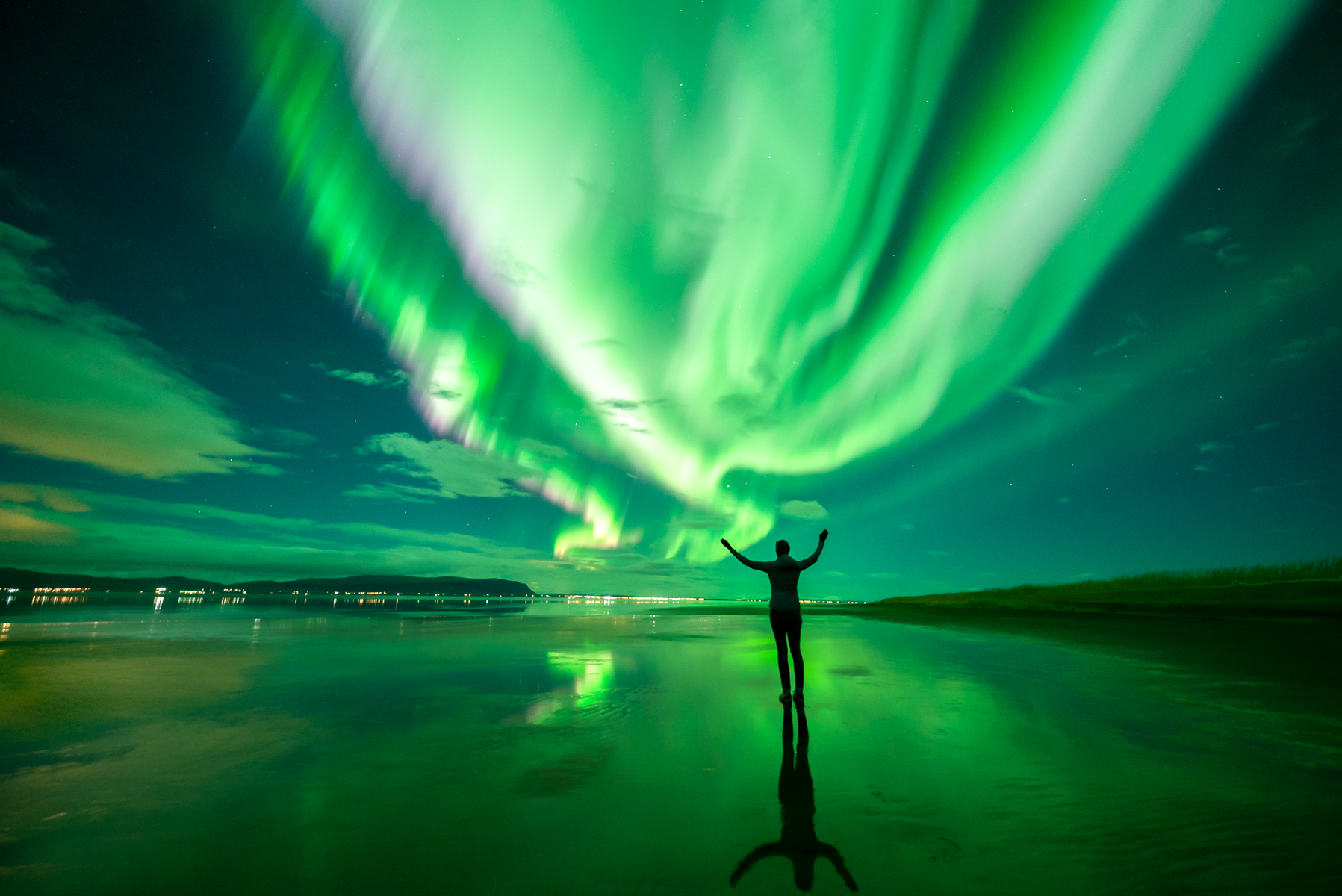
Patience rewarded with mesmerizing northern lights
Final Tips for Aurora Hunting
- Timing Is Everything: The best time to see auroras is typically between 10 p.m. and 2 a.m. local time. But, leveraging the real-time forecast data will provide much more accurate data. In Iceland, we regularly start to spot the Aurora as soon as the sun goes down and sometimes right the way through to dawn.
- Location Matters: Get away from city lights and head to a dark, open area with a clear view of the northern horizon – a good rule of thumb is to look in the direction of the Ursa Major constellation.
- Patience Is Key: Even with ideal conditions, auroras can be unpredictable. Bring warm clothing and stay vigilant.
By understanding these key elements and advanced space weather metrics, you can greatly enhance your chances of witnessing the Northern Lights. Armed with this knowledge, you’re ready to embark on a magical journey under the Arctic sky.
Why It’s Worth Joining a Northern Lights Tour
While chasing the Northern Lights independently can be an exciting adventure, joining a Northern Lights tour offers several advantages that can make your experience more rewarding and stress-free.
Expert Guidance
Northern Lights tours are led by experienced guides who understand local weather patterns, aurora forecasts, and the best viewing locations. They are skilled at interpreting real-time data and making last-minute decisions, ensuring you’re always in the best position to catch the auroras.
Why It Matters:
Even with a strong forecast, finding clear skies and navigating unfamiliar terrain can be challenging. Guides take the guesswork out of the equation, saving you time and effort.
Safety and Convenience
The Arctic regions known for auroras, such as northern Norway, Iceland, and Canada, can be challenging to navigate, especially in winter. Tours provide safe transportation, professional drivers, and warm shelters, eliminating risks associated with icy roads, wildlife encounters, or extreme cold.
Added Bonus:
Most tours include warm gear like thermal suits or heated vans, making the experience comfortable even in freezing temperatures.
Enhanced Photography Opportunities
Professional guides often include photographers who can help you capture stunning images of the auroras. They often also provide tripods, camera settings advice, and techniques for shooting in low-light conditions.
Why This Is Valuable:
Photographing the Northern Lights requires specific skills and equipment, and a knowledgeable guide can elevate your shots from average to extraordinary.
Cultural and Educational Insights
Beyond just aurora chasing, many tours incorporate cultural elements, such as stories about the Northern Lights from local indigenous perspectives. You’ll gain a deeper appreciation of the phenomenon and the regions you’re exploring.
In Summary
A Northern Lights tour combines expertise, convenience, and safety, offering an all-inclusive experience that maximizes your chances of witnessing and enjoying the aurora dancing above.
Whether you’re a seasoned traveller or a first-time visitor, a guided tour can transform your trip into a truly unforgettable adventure, increase your chances, and transform that wasted stress into building anticipation (…hopefully like the IMF Bt if you remember!)
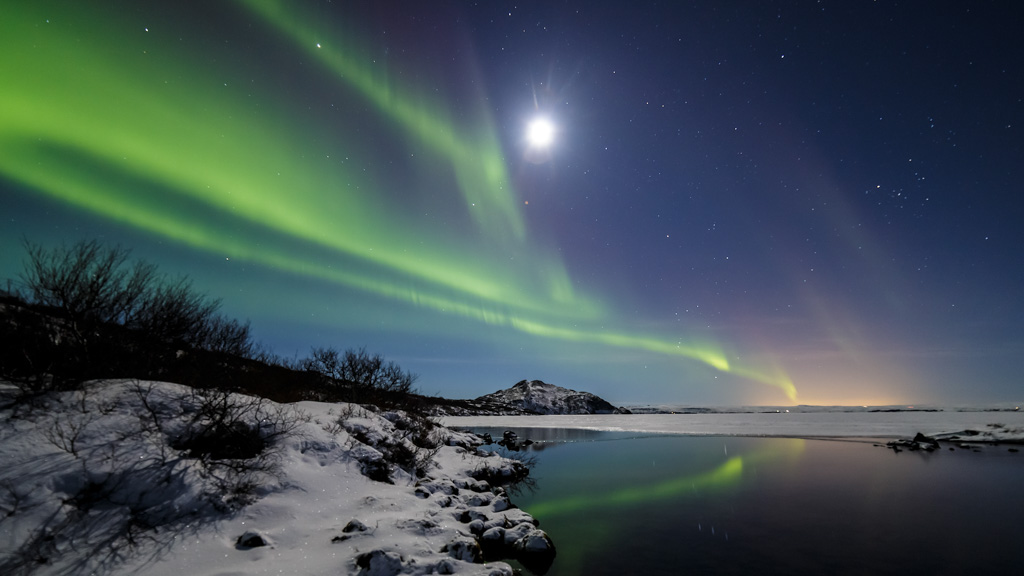
Northern Lights at Þingvellir, a popular location for northern lights hunters
Conclusion
Chasing the Northern Lights is a magical experience that requires a combination of preparation, knowledge, and a touch of patience. By understanding the science behind aurora forecasts – such as the Kp Index, Bz, solar wind speed, and density – you can make more informed decisions and increase your chances of success.
However, even with perfect conditions, nature can be unpredictable. Joining a Northern Lights tour offers peace of mind, a greater chance of seeing the spectacular Northern Lights, and expert support, making your aurora chase safer and more enjoyable.
Whether you decide to explore independently or with a guide, the effort is worth it. Standing beneath the shimmering green, purple, and red lights of the aurora borealis is a once-in-a-lifetime experience that will stay with you forever. So bundle up, check the forecast, and get ready to witness one of the most awe-inspiring displays our planet has to offer.

